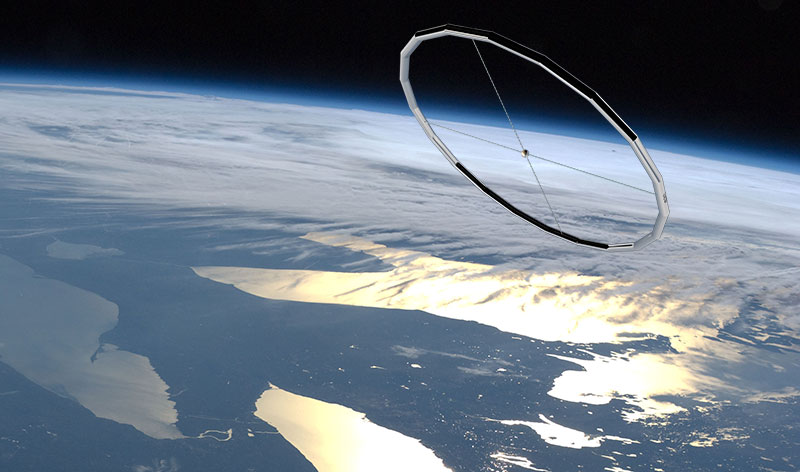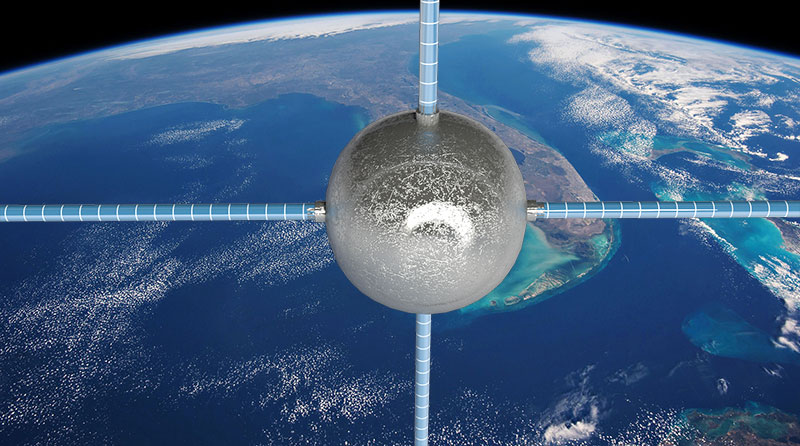Peace on Earth, Peace off Earth, Peace with Earth
The Design of the Space Peace Star
The design of the Space Peace Star will be similar, but not identical to the earlier OUR-SPS. The configuration of the torus-four rays-central sphere of the ceremonial wheel remains, but the rays would grow from (hardly visible) suspension cables into tubular elements – though still thinner than the torus tube.

Preliminary Design of the Space Peace Star
A generic starting point to achieve the project's goals looks at a torus with a 10-m crown radius, 1-m meridian radius, a sphere radius of 0.25-0.5 m, and radial tube of 0.1-0.3 m in radius. The maximum extension reaches then 22 m, for a total surface of some 450 m2; the torus encloses a volume of 62.8 m3.
The mass of the deployable structure will obviously depend on the technology chosen. With the earlier Contraves Inflatable Space Rigidized Structure (ISRS) laminates, the Space Peace Star would remain below 100 kg. However, some contemporary rigidizable approaches use materials with higher performance, but also with significantly heavier unit area mass values (~1 kg/m2). While the supporting conventional spacecraft elements would remain modest, the size of the sculpture will evolve from the basis of the given system mass (300 kg), as available technology and design solutions are identified.

Detail of Central Sphere and the Solar Power Struts
The four struts forming the cross in the scenter of of the SPS will be covered with thin-film photovotaics which will supply power to the central sphere. This will enable interactive communication to and from the Space Peace Star from locations around the world.
